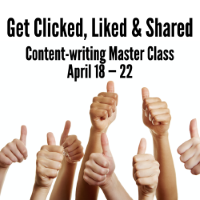Get skimmers to read deeper by understanding these 3 eye gaze patterns
Here’s a paradox: 1) Reading is the No. 1 thing people do on websites. 2) People try to read as little as possible on most of the sites they visit.

Instead of reading, they skim the surface of your page, trying to find what they’re looking for. Or so say Kara Pernice, Kathryn Whitenton and Jakob Nielsen, the authors of How People Read on the Web.
So how are your readers are looking at your webpage? In one or more of these ways:
1. F-shaped eye-gazing pattern
What happens? Visitors rely on visual signposts, like subheads, to guide their skimming. No signposts? No guidance.
Why? Without signposts, visitors skim in a path that forms the letter F. That is, they read most of the way across the first few lines, then read less and less of each subsequent line.
How to help? Add magnetic elements to help guide visitors’ eyes. Those include headlines, decks, subheads, links, bold-faced lead-ins, bulleted lists and highlighted key words.
2. Layer cake eye-gazing pattern
What happens? It’s a piece of cake to skim a webpage that layers on white space, subheads and blocks of text.
Why? Readers go for the frosting, making their way down the page by skimming subheads. If the section is relevant, they’ll read; if not, they skip.
How to help? To encourage this efficient skimming pattern, organize pages into sections, then label those sections with clear subheads. And use formatting to make subheads stand out.
3. Commitment eye-gazing pattern
What happens? Sometimes — “in far less-common cases” — visitors read some or all of your webpage.
Why? Visitors commit to pages that are:
- Interesting to them, provide a benefit or make them feel good about reading
- Skimmable and that make it easy for them to find what they’re looking for
- Credible and thorough
How to help? Write about a topic readers are interested in; focus on reader benefits and entertainment; design the page to be easy to skim.
How can you boost content marketing analytics?
How do you triple readership for your blog post? Get people to read 520% more of your story? Increase shares, likes and followers?
Learn to increase engagement at Get Clicked, Liked & Shared, content-writing workshop that starts April 18.
You’ll learn to write content readers want to read. Get fill-in-the-blanks templates for building popular content-marketing pieces. Find out how long content-marketing pieces, mobile headlines, paragraphs, sentences and words should be. Discover how to get the word out even to nonreaders.
You’ll leave with scientific, proven-in-the-lab best practices for writing content marketing pieces that travel the globe instead of just staying home on the couch.
Save up to $100 with our group discounts.
___
Sources: Kara Pernice, Kathryn Whitenton, and Jakob Nielsen; How People Read on the Web: The Eyetracking Evidence; Nielsen Norman Group; Sept. 10, 2013

